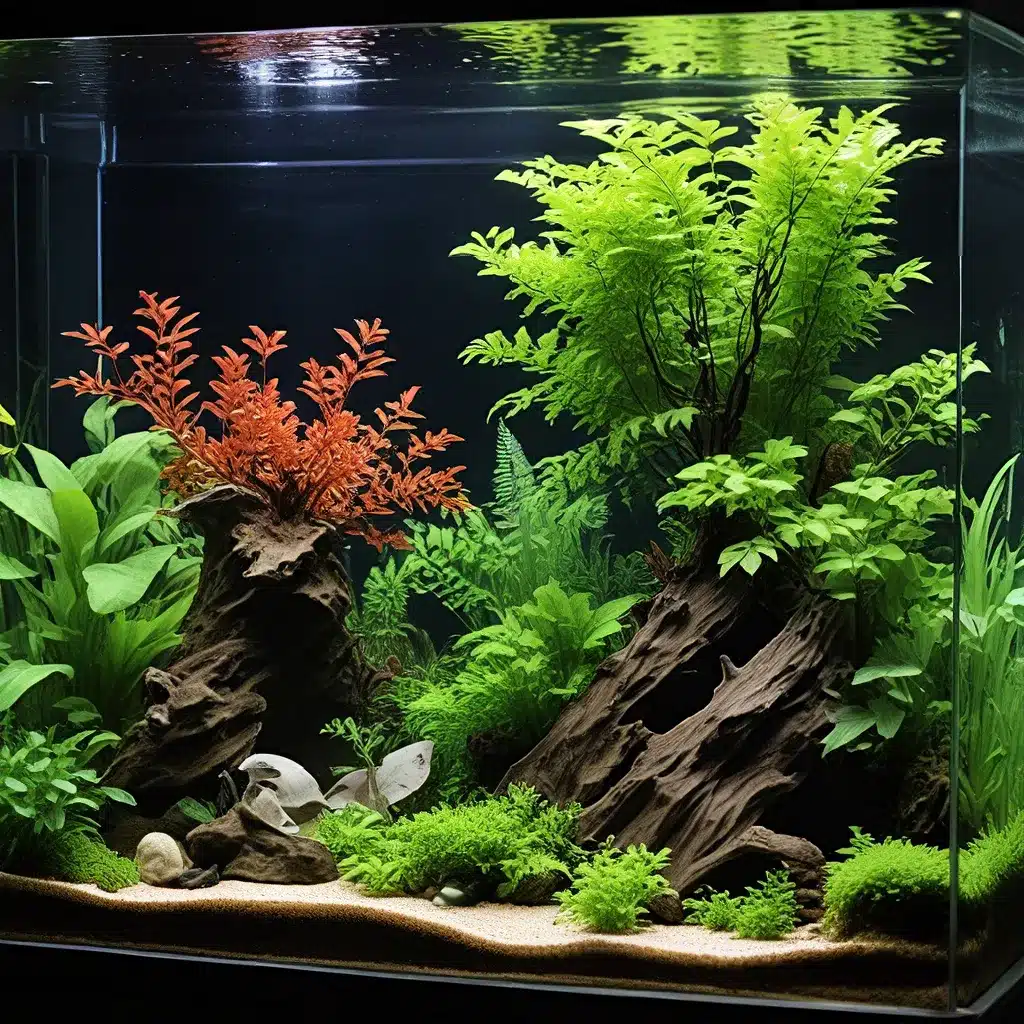
Unlocking the Secrets of a Thriving Aquarium Ecosystem
Maintaining a healthy and balanced aquarium ecosystem is the key to creating a vibrant and thriving underwater world. Whether you’re a seasoned aquarist or just starting your journey into the captivating realm of aquarium keeping, understanding the intricate dynamics between aquatic plants, fish, and water parameters is crucial for long-term success.
In this comprehensive guide, we will delve into the strategies and techniques that will empower you to cultivate a harmonious aquarium ecosystem. From selecting the right species to mastering the art of aquascaping, we’ll equip you with the knowledge and insights to transform your aquarium into a self-sustaining oasis.
Establishing a Symbiotic Relationship
At the heart of a thriving aquarium ecosystem lies the delicate balance between the various components that work together in a symbiotic manner. Aquatic plants, for instance, play a vital role in maintaining water quality by absorbing excess nutrients and producing oxygen through photosynthesis. Conversely, fish and other aquatic organisms contribute to the ecosystem by providing a natural source of waste, which the plants then utilize as a source of nutrients.
This intricate web of interdependence is the key to creating a self-sustaining aquarium that requires minimal intervention. By understanding and leveraging these natural processes, you can minimize the need for frequent water changes, supplemental fertilizers, and complex filtration systems.
King Aquarium, a leading provider of aquarium supplies and expertise, emphasizes the importance of cultivating a balanced ecosystem for long-term success. “When you establish a harmonious relationship between the various components of your aquarium, you create an environment that is not only visually stunning but also requires less maintenance and provides a healthier, more stable habitat for your aquatic inhabitants.”
Selecting the Right Species
One of the critical factors in creating a thriving aquarium ecosystem is the selection of appropriate aquatic species. Choosing fish, invertebrates, and plants that complement each other’s needs and behaviors is essential for maintaining a delicate balance.
For instance, herbivorous fish such as plecos, mollies, or Siamese algae eaters can help control the growth of algae by consuming it as a primary food source. Conversely, omnivorous fish like tetras or cories can help keep detritus and uneaten food in check, contributing to overall water quality.
When it comes to aquatic plants, fast-growing and nutrient-absorbing species like java moss, water wisteria, or hornwort can effectively compete with algae for available resources, preventing unwanted overgrowth. Carefully selecting a diverse array of plant species with different growth habits and lighting requirements can create a visually stunning and self-regulating aquarium ecosystem.
Caesar’s Tropical Fish offers a wealth of information on compatible species selection and their roles within the aquarium ecosystem. By leveraging this expertise, you can ensure that your aquarium inhabitants thrive in harmony.
Mastering the Art of Aquascaping
Aquascaping, the art of designing and arranging aquatic plants, rocks, and decorations, is a crucial component in cultivating a balanced ecosystem. Well-planned aquascapes not only enhance the aesthetic appeal of your aquarium but also play a vital role in maintaining optimal water parameters and providing natural hiding spots for your aquatic inhabitants.
One of the key principles of successful aquascaping is creating diverse and multilayered layouts. By incorporating elements like driftwood, submerged rocks, and strategically placed plants, you can mimic natural underwater environments and provide ample hiding spots for fish and invertebrates. This, in turn, helps reduce stress, promote natural behaviors, and foster a healthier overall ecosystem.
Additionally, thoughtful plant placement and species selection can influence the distribution of light, nutrients, and water flow within your aquarium. For instance, positioning fast-growing stem plants in the middle or background can help absorb excess nutrients and prevent algae growth, while low-growing carpeting plants can help oxygenate the substrate and provide cover for smaller inhabitants.
r/PlantedTank, a vibrant online community, offers a wealth of inspiration and practical advice on crafting visually stunning and ecologically balanced aquascapes.
Optimizing Water Quality and Filtration
Maintaining optimal water quality is a crucial aspect of cultivating a thriving aquarium ecosystem. Proper filtration, water testing, and regular maintenance are essential for keeping your aquatic inhabitants healthy and your plants thriving.
Biological filtration, typically achieved through the use of filter media, plays a vital role in removing waste products and converting them into less harmful compounds. This process is facilitated by the presence of beneficial bacteria that colonize the filter media, creating a natural water purification system.
Mechanical filtration, on the other hand, helps remove solid waste, uneaten food, and other particulate matter from the water column, improving overall clarity and reducing the risk of water quality issues.
In addition to filtration, frequent water testing and targeted water changes are essential for maintaining optimal water parameters, such as pH, temperature, and dissolved oxygen levels. By closely monitoring and adjusting these parameters, you can create an environment that supports the diverse needs of your aquarium inhabitants.
Integrating live aquatic plants into your filtration system can further enhance water quality. These plants can act as natural biological filters, absorbing excess nutrients and releasing oxygen back into the water. By leveraging the power of plants, you can reduce the reliance on mechanical and chemical filtration, creating a more self-sustaining ecosystem.
Embracing the Challenge of Balance
Cultivating a thriving aquarium ecosystem is a dynamic and rewarding journey that requires a deep understanding of the intricate relationships between aquatic life, plants, and water parameters. By embracing the challenge of maintaining this delicate balance, you’ll not only create a visually stunning aquarium but also foster a self-sustaining environment that requires minimal intervention.
Through careful species selection, thoughtful aquascaping, and diligent water quality management, you can unlock the secrets to a healthy and vibrant aquarium ecosystem. Remember, each aquarium is unique, and it may take some trial and error to find the perfect balance. But with the right strategies and a dedication to your aquatic companions, you’ll be well on your way to creating a thriving underwater haven that brings you endless joy and inspiration.

